When I visited shoemaker Philippe Atienza (above) in his new Parisian atelier, back in March, his furniture had just arrived. Some nice chairs, rugs, tables, and a lot of old machinery.
He’d been in the space for three weeks, but it was finally starting to come together and feel like his.
Like the other arches in Viaduc des Arts (where umbrella maker Michel Heurtault is also located) there is a large, open-plan area on the ground floor, a basement and a slightly smaller first floor, under the curve of the arch.
In many ways this is ideal for an artisan like Philippe. The ground floor can show off all his current models, plus some aspects of the work. The heavy machine-driven stuff can be kept to the basement. And upstairs becomes a private space for client consultations.
Philippe has only been on his own since 2015. But he is an old hand in the industry.
He began working aged 16, and joined Les Compagnons du Devoir – the trade association under which French craftsmen do their own ‘Tour de France’, learning different crafts all around the country.
Philippe was an apprentice for two years, then taught for several more, before working for John Lobb Paris in his final year.
(The bespoke arm of the shoemaker owned by Hermes, which also makes ready-to-wear shoes in Northampton. Not connected to John Lobb Ltd – bespoke on St James’s Street.)
After he left, he joined John Lobb full time as a maker (lasting the shoes and stitching the welt and sole) – alongside a pattern-maker, closer and finisher. “It was a very high level, and frankly at that time I wasn’t good enough,” he says. “But I worked hard and improved every day.”
After a year, he wanted to do something different. Lobb were about to stop making boots and Norwegian shoes, so he threw himself into that, learning the specific skills and reinvigorating it. He ran that department, and seven years later, took over running the whole workshop.
“It’s strange looking back to think how fast things moved for me,” says Philippe. “But I always wanted to learn and worked closely with the more experienced craftsmen to get my skills up to scratch.”
During this time he was also awarded the Meilleur Ouvrier de France – one of the most prestigious awards a craftsman can receive, as it is given by other craftsmen and is across all crafts, so is more commonly given to chefs or patissiers.
The tan monk strap pictured above was one of three pieces he made for the prize. (I will do a separate piece on the various French prizes – they have much more integrity than the various royal warrants in the UK, but can be hard to distinguish from each other.)
He then moved to Massaro, the French maker best known for haute couture women’s shoes (and owned by Chanel). Philippe had always made women’s shoes – his training included making proper ladies bespoke, with solid-leather high heels and innovative patterns.
But at Massaro, his main job was to lift up the quality of the men’s side, which had never been developed as much as the women’s.
“All the shoes there were very light, very ephemeral,” he says. “We had to give some proper structure to the men’s production – take them away from cementing, for example.”
Interestingly, the experience of haute couture has made him very open to trying any new design and idea today. “The designers never liked it if you didn’t want to try to make a design,” he says. “You could try and fail, but not trying wasn’t acceptable.”
This experimental nature comes across particularly strongly in his women’s shoes, which include huge, curled soles, precious stones and glorious feather designs.
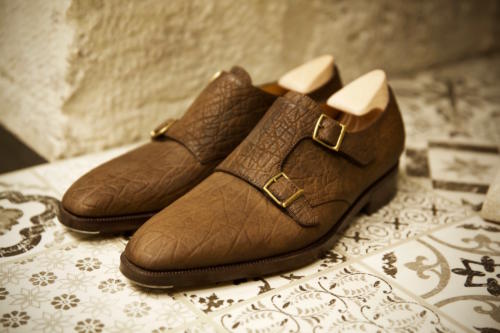
The men’s shoes are a little more down to earth, but still have a wildness running through them. When we meet he is wearing black derbies with zips around the apron and welt (above). And his current favourite material is hippo.
There are several more classic models sitting around the workshop – and more coming as the workshop develops (the official opening is later this month). The place is also worth a visit purely for Philippe’s collection of vintage shoemaking machinery.
But still, you rather feel that this is a shoemaker you come to when you’d like something a little different.
Men’s starts at 4500 euros and women’s 3000 euros (including VAT, only bespoke).


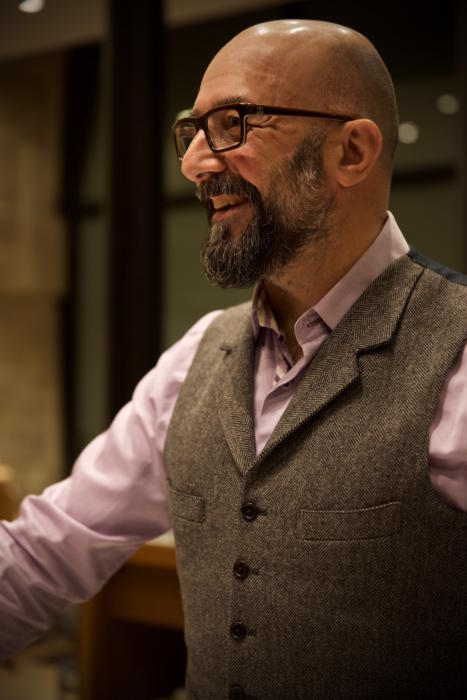
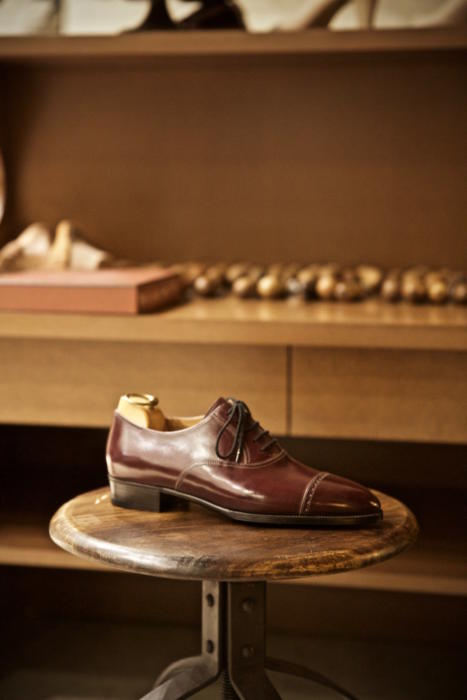
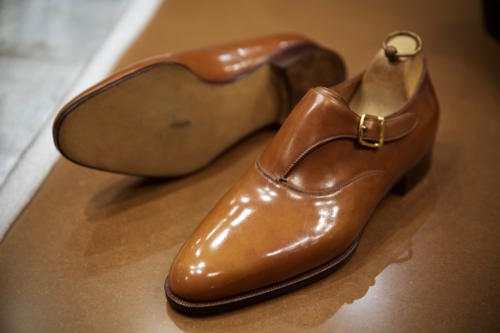
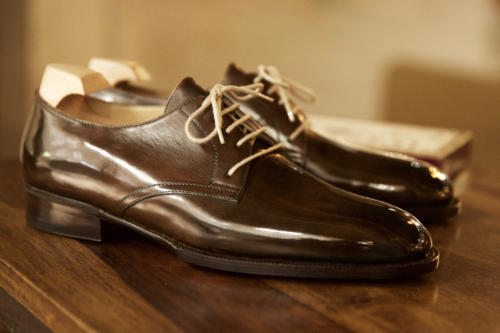
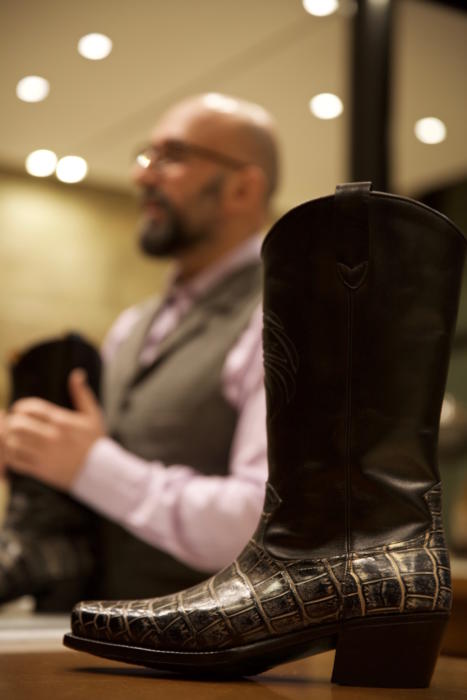
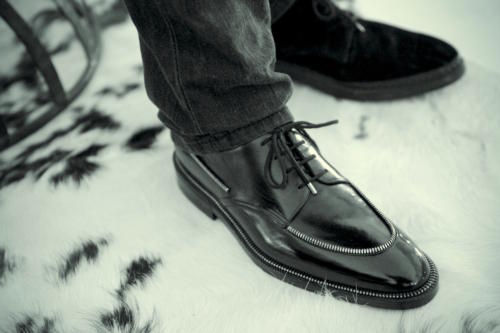
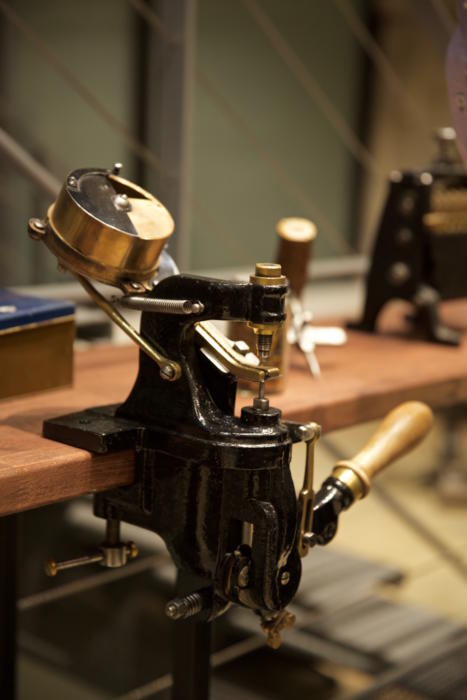
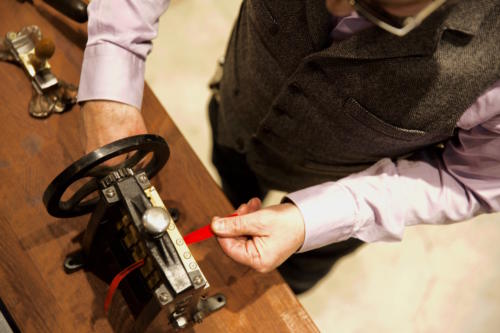
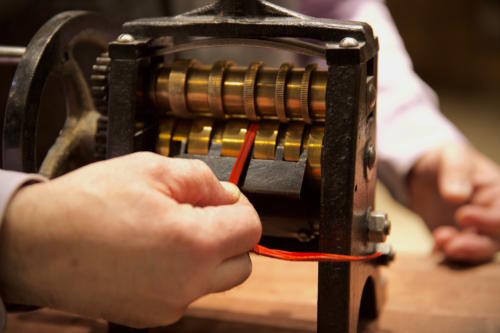


























Hey, excellent article as always. Question: from a customer experience perspective, how do you compare relatively large bespoke operations with a ‘well-known’ brand name in the bespoke / luxury realm (G&G, Bemer, Lobb Paris, Cleverley etc.) and smaller independents (Philippe Attienza, Stephane Jimenez, Dimitri Gomez, Nicholas Temperman, etc.). Would you say that you would get better ‘value’ from independents (all of them having worked for years with the ‘best’ / larger scale operations)? Intuitively, I feel that they are ‘closer’ to the product, a bit like when the cutter is also client facing in bespoke suits, which has some value. Have you ever tried any of those yourself?
Thanks much,
M
I haven’t, no, so I can’t comment directly. But I would say that the smaller makers like that in all fields tend to give better value for money, with the flipside that they often take longer or at least are more volatile in their timescales. They can also have issues with quality control, but that is rare
Nice to meet to Philippe Atienza, thanks Simon
Hi Simon,
what an interesting article, i should check the shop out when in Paris again. On a more general note could you advise on the difference of dark brown Oxfords compared to chestnut i.e. a much brighter, warmer and more orange/reddish brown? If one owned not yet a brown shoe would there be any reason to not buy chestnut, but instead dark brown? Would chesthut feel at home in a traditional (think banking) office?
No, I’d advise dark brown. A lot more versatile and if dark enough goes with pretty much any trouser. Chestnut is limited to mid-tones (eg mid-grey) and paler, plus perhaps denim. Lots on the site if you search around
I definitely agree with Simon, Marie. Especially if this is for someone in banking where people (unfortunately) tend to think that black is king. Being in Finance myself, I already have enough trouble convincing people that a pair of nice dark brown shoes, when worn with taste, looks much better than those (often) low quality black shoes… Beyond Simon’s point on dark brown shoes being more versatile, light brown shoes will draw too much attention (in the wrong way) in a conservative work environment.
Speaking of that, btw Simon, there was a G&G sample sale on Friday and I think I was the luckiest man of the day. Got a pair of bespoke seamless Oxford in a burnished dark oak hatch grain for… £400 (10% of actual price…)! Tony also kindly offered to send them to the factory to take a bit of excess leather on the front. Fit is almost perfect, I was so lucky on this one… M
Wow, that sounds amazing!
I also agree with Simon. I have a pair of shoes in a lighter brown. They are lovely but don’t go well with darker colours like navy and charcoal.
A pair of dark brown would be much more versatile, they do go with almost everything. I’m on the hunt for a pair in dark brown now.
Hi Simon,
It’s really stunning how you manage to uncover craftsmen and shops, unknown to the average consumer but should be of great interest to PS readers still ! In itself this is already a valuable contribution to the menswear industry as a whole!
Also your idea of taking a closer look at the French prizes is Worth pursuing. It would be interesting if you attempted a comparative approach – the UK’s spring to mind, with the issue of “integrity” – as you mentionned – in sight. This could be an opportunity to start thinking about a bigger project since the market of traditional or national craftsmanship has become global.
John
Magnificent shoes, beautiful lines! Pleased to see they are not built on lasts incorporating the current fashion for turned-up toes, (toe spring.)
Hi Simon, are you any closer to realising your planned piece on the French prizes? It would be a great resource. Thanks! chris
No sorry Chris, it’s actually been a little neglected. I will try to get to it again. Thanks for the reminder